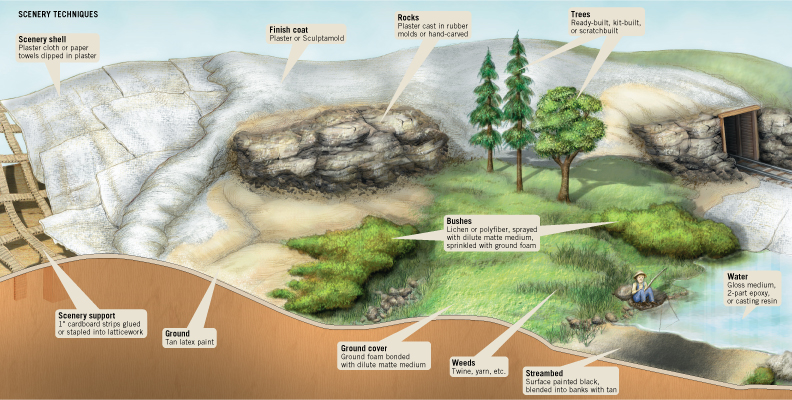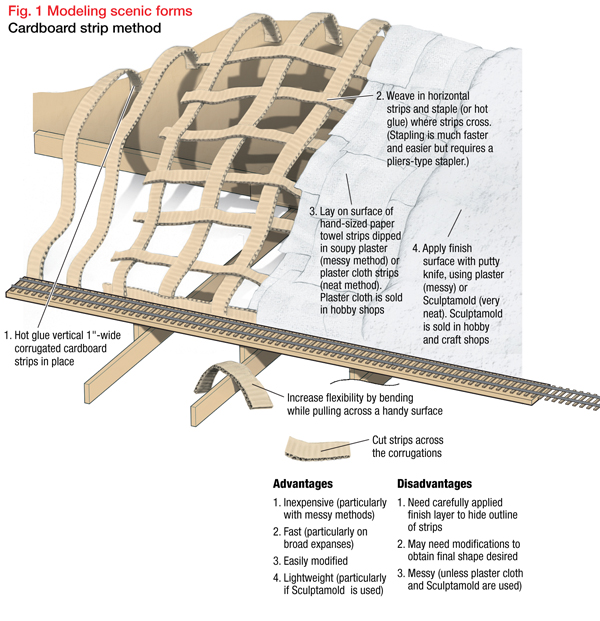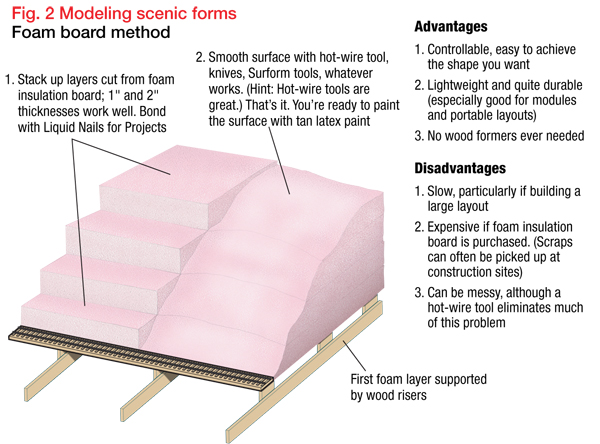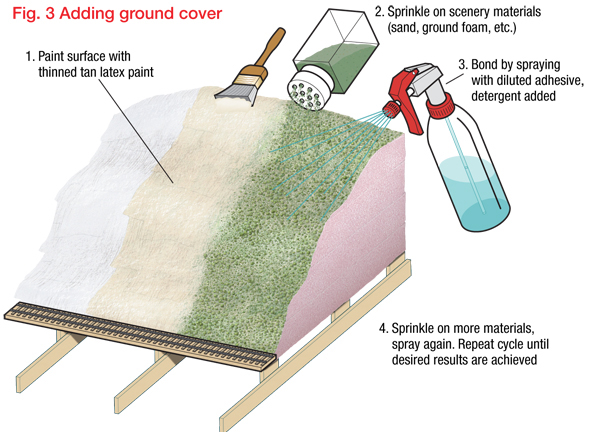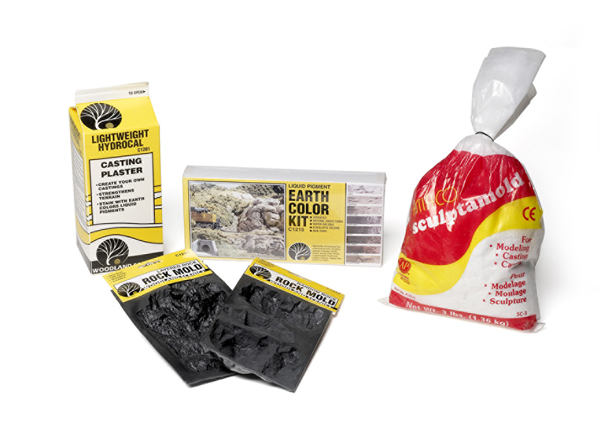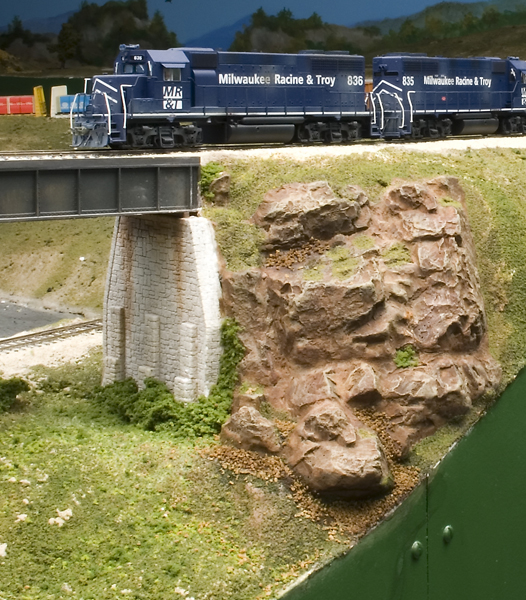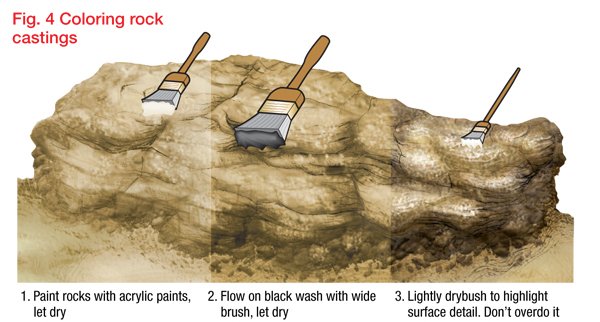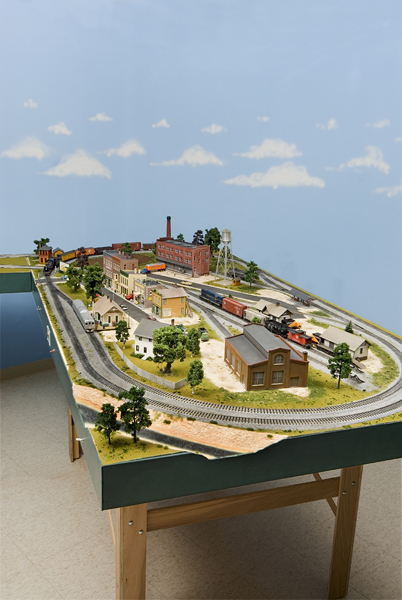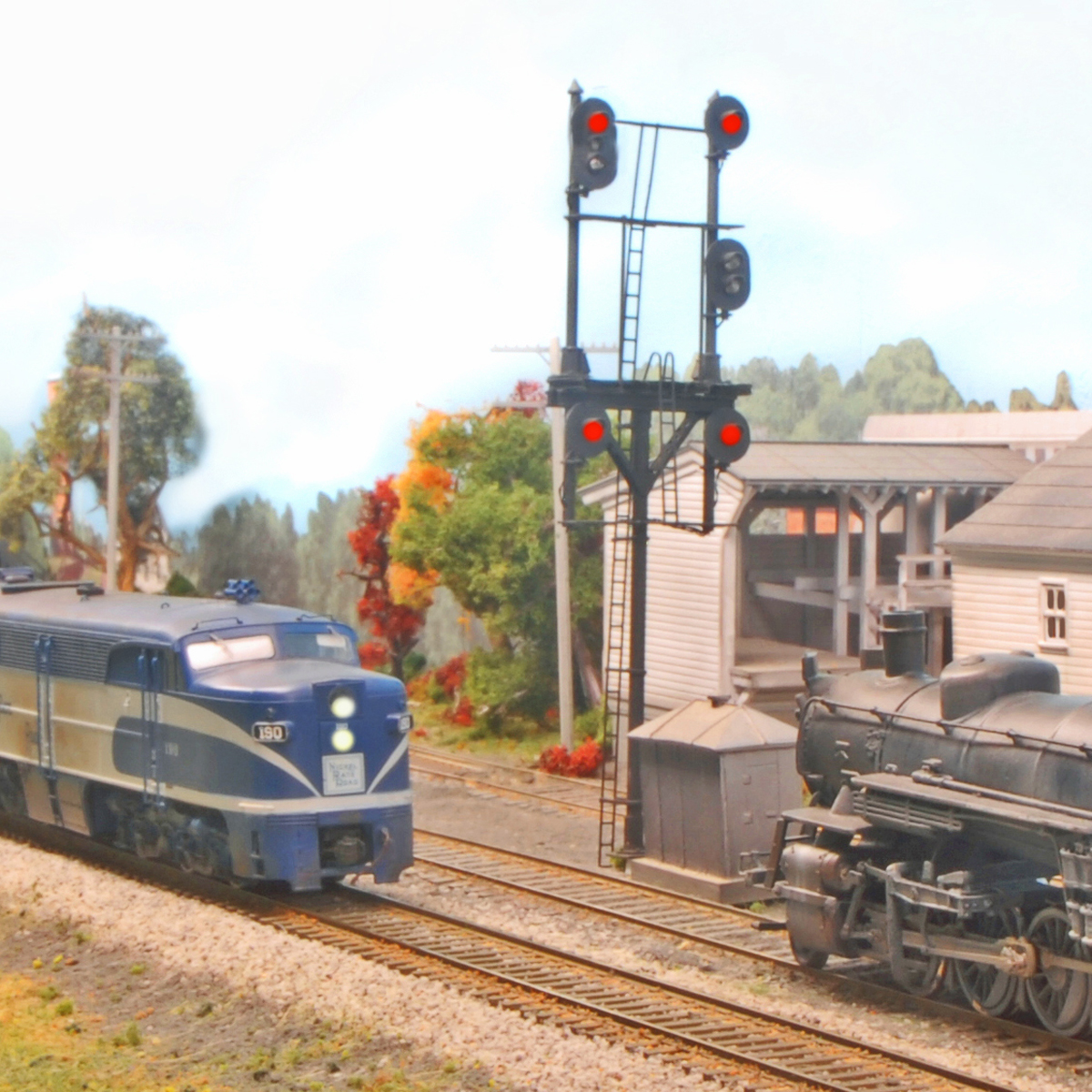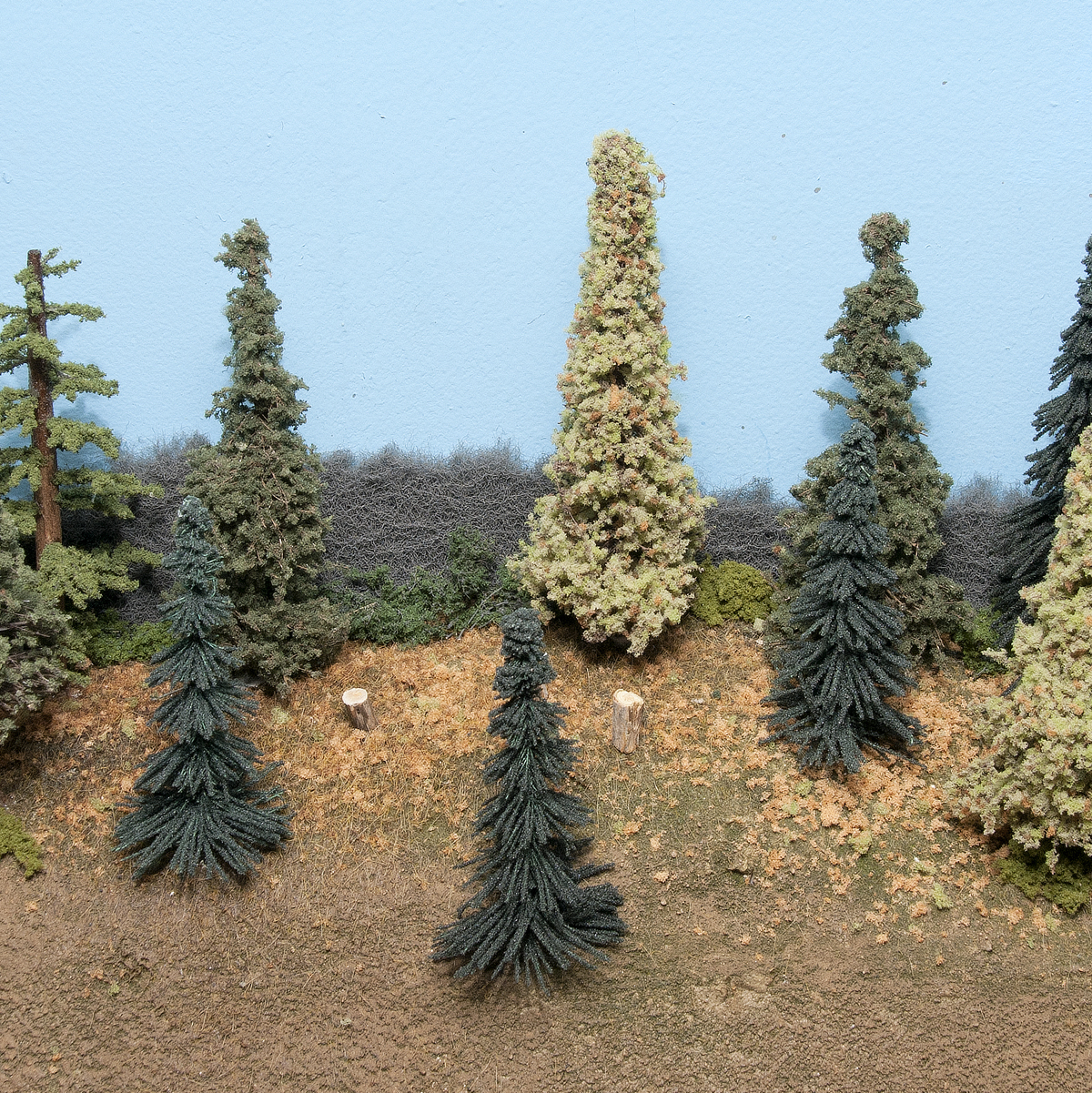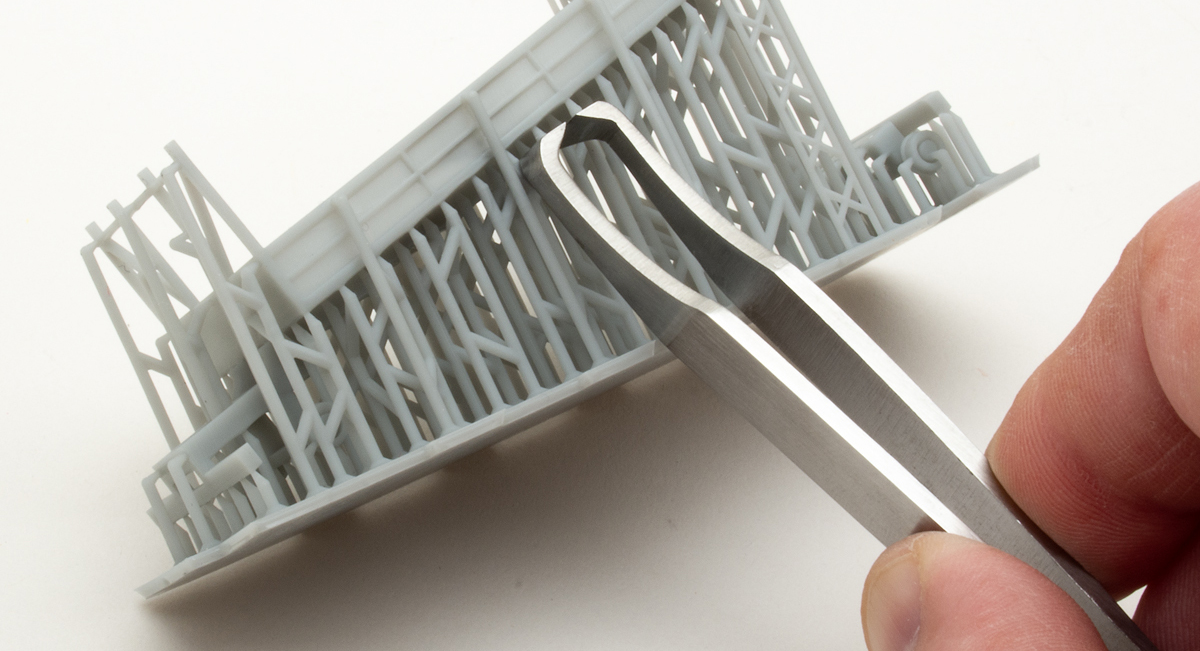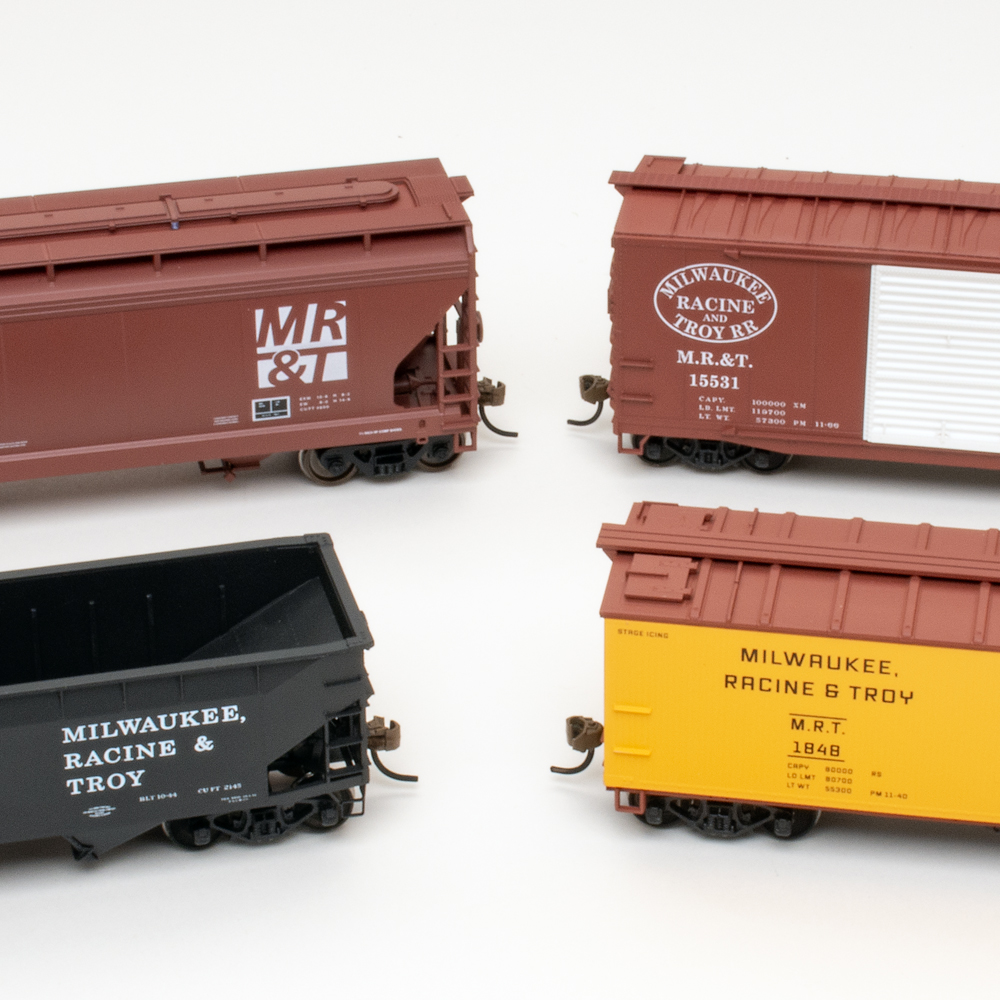Adding scenery
There are three elements of scenery making: form, color, and texture. Let’s start with form, the shapes of things. Figures 1 and 2 (above) show two popular techniques and some advantages and disadvantages of each. The versatility and ease of use of extruded-foam insulation board has made that method extremely popular with today’s modelers, so if you don’t have a preference, choose that. One word of caution, though: Foam board can give off toxic fumes when cut with a hot wire, work in a very well ventilated area or stick to knives and Surform carving tools.
Color and texture
Once you’ve modeled the ground, it’s time to paint it. A common mistake is to choose browns that are too dark. Soils are lighter than you think, and layout lighting can’t approach the intensity of sunlight. Medium tan in a flat latex wall paint works well for model railroad scenery.
Thin the latex paint about 50-50 with water to make it easy to cover the uneven surface. Brush the paint on, and then sprinkle on scenery materials immediately to take advantage of the paint’s adhesive quality. You can use sifted real dirt, tiny rocks, ground-up leaves, or kitty litter, but the favorite material today is ground foam.
This is foam rubber (just like in seat cushions), shredded and dyed. Woodland Scenics and Scenic Express are two major manufacturers. A variety of grinds (from fine to coarse) and colors are available.
Bonding scenery materials
As you build up scenery materials, you can bond them in place by spraying them with a dilute mixture of adhesive from a household paint sprayer, as shown in fig. 3. (Clean the sprayer afterward if you expect to be able to use it again.) A commonly used adhesive is matte medium, an acrylic varnish available from art supply stores. A good ratio for spraying is 5 parts water to 1 part matte medium.
Adding about a half-teaspoon of liquid dish soap to the mix will help the adhesive penetrate the scenery materials. Otherwise, you can end up with a crust that breaks away, revealing loose materials underneath. Another option is to wet the area with 70 percent isopropyl alcohol, let it soak in, and then apply the scenery adhesive.
To glue scenery in small areas, spray on “wet” water (water with a drop of liquid detergent added), then apply the adhesive (mixed the same as for spraying) with an eyedropper.
Rocks
Some modelers carve rocks in plaster as it’s setting up and get good results. For the rest of us, a better, faster method is to cast plaster rocks in rubber molds.
Plaster of paris, patching plaster, and Hydrocal all work well for casting rocks. Just mix the plaster to a thick cream consistency and pour it in the molds. Either let the castings set up in the molds and then glue them to the layout, or as the plaster is about to set, cast the rock in place by holding the mold to the layout.
To unify a rock surface, apply thick plaster between castings and use a knife to carve it when it’s not quite set so it blends with the castings.
Painting rocks
Most modelers use artist’s acrylics, usually out of tubes, for painting scenery. The paint dries quickly and cleans up with soap and water. (You’ll note that the materials we’ve discussed here are all water-soluble. This means that you can keep working without waiting for things to dry completely, and cleanup is fairly easy.)
When painting rocks, begin with a thinned coat of white, though you can go straight to work with colors. For the most part stick with earth tones: burnt umber, raw umber, burnt sienna, and raw sienna. Of these, burnt umber (a rich brown) is the most useful. You’ll also need some Titanium White and Mars Black to mix with other colors to lighten or darken them.
Squeeze out short ribbons of paint on a palette, a white dish, or whatever’s handy (as long as it’s white, so you can see the colors as they are). Keep a cup of clean water handy (change it frequently as it gets muddy), and start mixing with your brush and painting. This may sound difficult, but you’ll get the hang of it quickly.
Washes and drybrushing
Several special painting techniques will prove helpful when modeling. The first is washes, wherein you flood an area with a thin solution of paint, using a large brush. See fig. 4. This technique is useful not just for establishing a color base, but for bringing out details later in the painting process. After the base color has dried, apply a very thin wash of a dark color, which will settle into nooks and crannies and simulate natural shadows.
Another useful technique is drybrushing. Dip the brush into paint, wipe it almost dry on a paper towel so that only a tiny amount of paint remains, then drag it lightly over raised surfaces. This will deposit paint only on the high points of the surface, letting you bring out highlights, small details and worn or faded areas. A flat brush works well for this.
Populating the layout
Unless you’re modeling Arizona’s Monument Valley or a granger line in mid-Nebraska, you’ll probably want some trees on your layout. Modelers used to have to laboriously build their own, and some still do, but realistic trees are now readily available from makers such as Walthers, Noch, Heki, Woodland Scenics, Faller, and Busch, among others.
Nothing adds interest to a layout like realistic scale buildings. Once you have industries at which to pick up and deliver cars, your railroad has a reason to be. A huge variety of model kits are available in every scale, for modelers of any skill level. But if you just want to get started quickly, a growing assortment of prebuilt structures from manufacturers including Menards, Walthers, Atlas Model Railroad Co., and Woodland Scenics make it easy to give your railroad a sense of place. Finally, add some miniature figures to populate your world. Bachmann Trains, Preiser, Faller, Vollmer, Walthers, Woodland Scenics, and others offer a wide variety.
Give scenery modeling a try, and keep these scenery basics in mind. It’ll make a tremendous difference on your layout. If you don’t believe it, just sprinkle some green foam on a stretch of plywood next to the track, plop down a building and some trees, then run a train past. What a difference!





